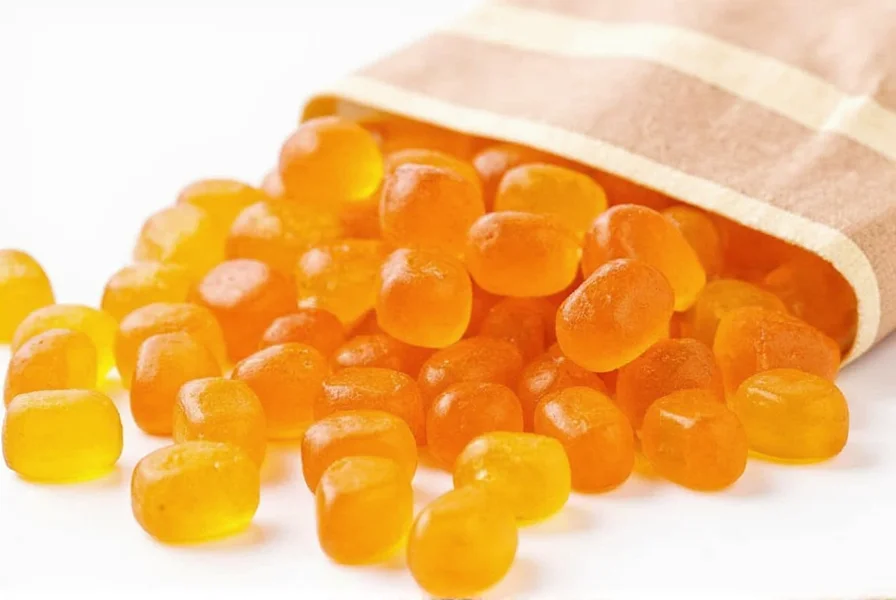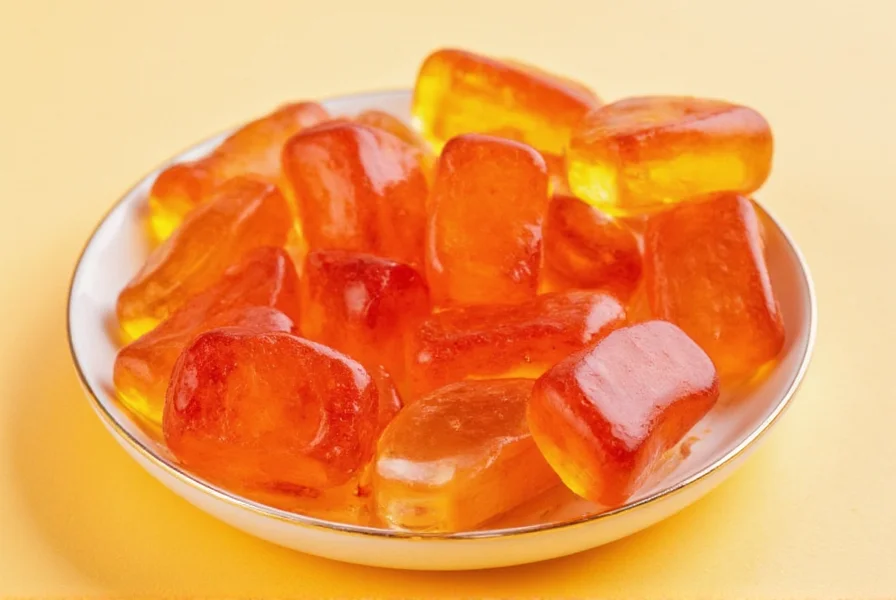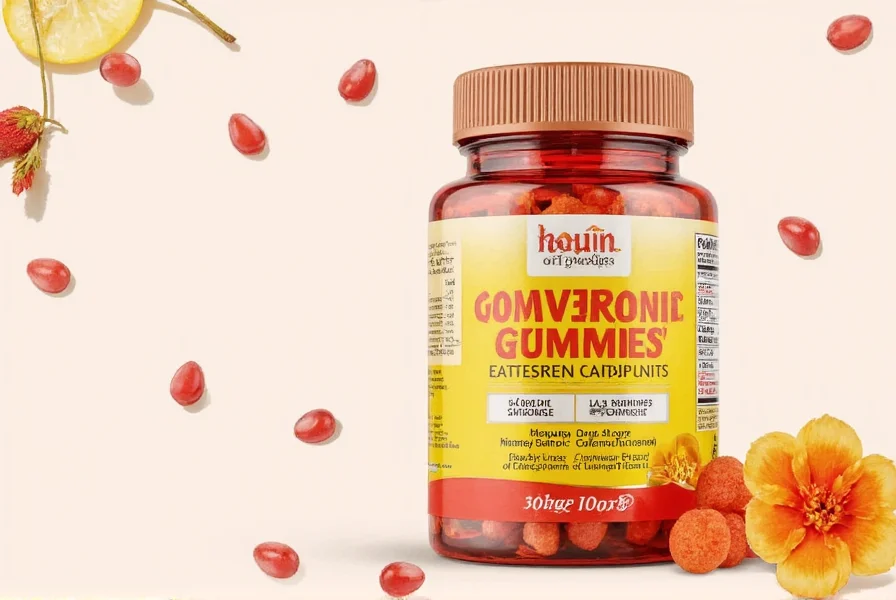Saffron gummies have gained popularity as a convenient way to consume this expensive spice in supplement form. Unlike saffron threads used in cooking, these supplements contain concentrated extracts designed to deliver specific bioactive compounds. The two primary compounds researchers focus on are crocin (which gives saffron its red color) and safranal (responsible for its distinctive aroma), both believed to contribute to saffron's potential health benefits.
When evaluating saffron gummies for mood support, it's crucial to understand that not all products deliver clinically effective doses. Most research on saffron and mood has used 30mg daily of standardized extracts like affron® (a water-based extract) or 17.5mg of safranal twice daily. Many commercial gummies contain substantially less saffron extract per serving, which may limit their effectiveness. Always check the actual saffron extract amount rather than just the total gummy weight, as fillers and sugars often comprise the majority of the product.
| Form | Typical Saffron Content | Standardized Extract? | Research-Supported Dosage |
|---|---|---|---|
| Saffron gummies | 15-30mg extract per serving | Varies by brand | Often below 30mg daily |
| Capsules/tablets | 28-30mg extract per serving | Commonly standardized | Meets research dosage |
| Saffron tea | Variable, typically low | No | Below effective levels |
The conversion from saffron extract dosage in gummies to effective therapeutic levels requires careful consideration. A 2020 meta-analysis published in Phytotherapy Research concluded that 30mg daily of saffron extract demonstrated significant benefits for mild-to-moderate depression symptoms compared to placebo. However, many gummy products contain only 15-20mg of saffron extract per serving, sometimes requiring multiple gummies to reach the research-backed dosage. This becomes problematic when the additional gummies increase sugar intake substantially.
When comparing saffron gummies vs capsules, several factors matter. Gummies offer better taste and easier consumption, particularly for those who dislike swallowing pills. However, capsules typically deliver higher concentrations of saffron extract with less added sugar and fillers. The bioavailability of saffron compounds appears similar between forms when standardized extracts are used. For individuals monitoring sugar intake or managing diabetes, capsules may be the preferable option despite the convenience factor of gummies.

Quality considerations for saffron supplement safety include verifying the presence of standardized extracts with specified crocin and safranal content. Reputable manufacturers provide certificates of analysis showing the actual compound concentrations. The most studied extracts include affron® (standardized to 3.5% lepticrosalides) and Satiereal® (standardized to 2% safranal). Without this standardization, the actual active compound content can vary significantly between batches, affecting both safety and efficacy.
Regarding safety, saffron is generally well-tolerated at recommended doses. The saffron gummies research studies reviewed by the European Medicines Agency indicate that doses up to 100mg daily are safe for short-term use (up to 8 weeks). Common side effects at higher doses include dry mouth, anxiety, dizziness, and nausea. People with bipolar disorder should consult healthcare providers before using saffron supplements, as it may trigger manic episodes. Pregnant women should avoid high-dose saffron supplements due to potential uterine stimulation effects.
Understanding how much saffron is in gummies requires careful label reading. Many products list "saffron (Crocus sativus) extract" followed by a much larger "proprietary blend" amount that includes fillers. Look for products specifying both the total extract amount and the standardization percentage for crocin and safranal. For example, a quality product might state: "Saffron extract (Crocus sativus) (stigma and style) 30mg (standardized to contain 2% safranal and 3% crocin)." Without this specificity, you cannot determine if the product delivers a research-supported dose.
The saffron crocin content in supplements matters because crocin appears to be one of the primary compounds responsible for saffron's mood-supporting properties. Studies suggest crocin may influence serotonin, dopamine, and norepinephrine levels in the brain. Higher quality supplements will specify the crocin percentage, with effective products typically containing at least 2-3% crocin. Without this information, consumers cannot assess whether the product contains sufficient bioactive compounds to potentially deliver benefits.

When selecting saffron products, look for third-party testing verification from organizations like USP, NSF, or ConsumerLab. These certifications confirm that the product contains the ingredients listed on the label in the declared amounts and is free from harmful contaminants. The presence of these certifications significantly increases confidence in product quality, especially important for saffron gummies for sleep support where consistent dosing matters.
Frequently Asked Questions
Do saffron gummies really work for mood improvement?
Research shows standardized saffron extracts (30mg daily) can support mood, but many gummies contain lower doses. Products with verified 30mg of standardized extract like affron® may provide benefits, while those with significantly less likely won't reach effective concentrations based on clinical studies.
How much saffron should be in each gummy for effectiveness?
For mood support, research indicates 30mg of standardized saffron extract daily. Each gummy should contain at least 15mg of extract if taking two daily, with verification of crocin (2-3%) and safranal (2%) content. Many products contain only 5-10mg per gummy, requiring excessive consumption to reach effective doses.
Are saffron gummies safe for long-term use?
Current research supports saffron safety for up to 8-12 weeks at doses up to 100mg daily. Limited data exists on longer-term use. Most gummies contain lower doses than studied, but the sugar content in multiple daily gummies may pose separate health concerns with extended use. Consult a healthcare provider for personalized advice.
What's the difference between saffron extract and saffron powder in gummies?
Saffron extract is concentrated and standardized to contain specific percentages of active compounds (crocin, safranal), while saffron powder is simply ground saffron threads. Extracts deliver consistent, research-backed doses in smaller amounts, whereas powder would require impractical quantities to reach effective levels, making extract the preferred form for supplements.











 浙公网安备
33010002000092号
浙公网安备
33010002000092号 浙B2-20120091-4
浙B2-20120091-4